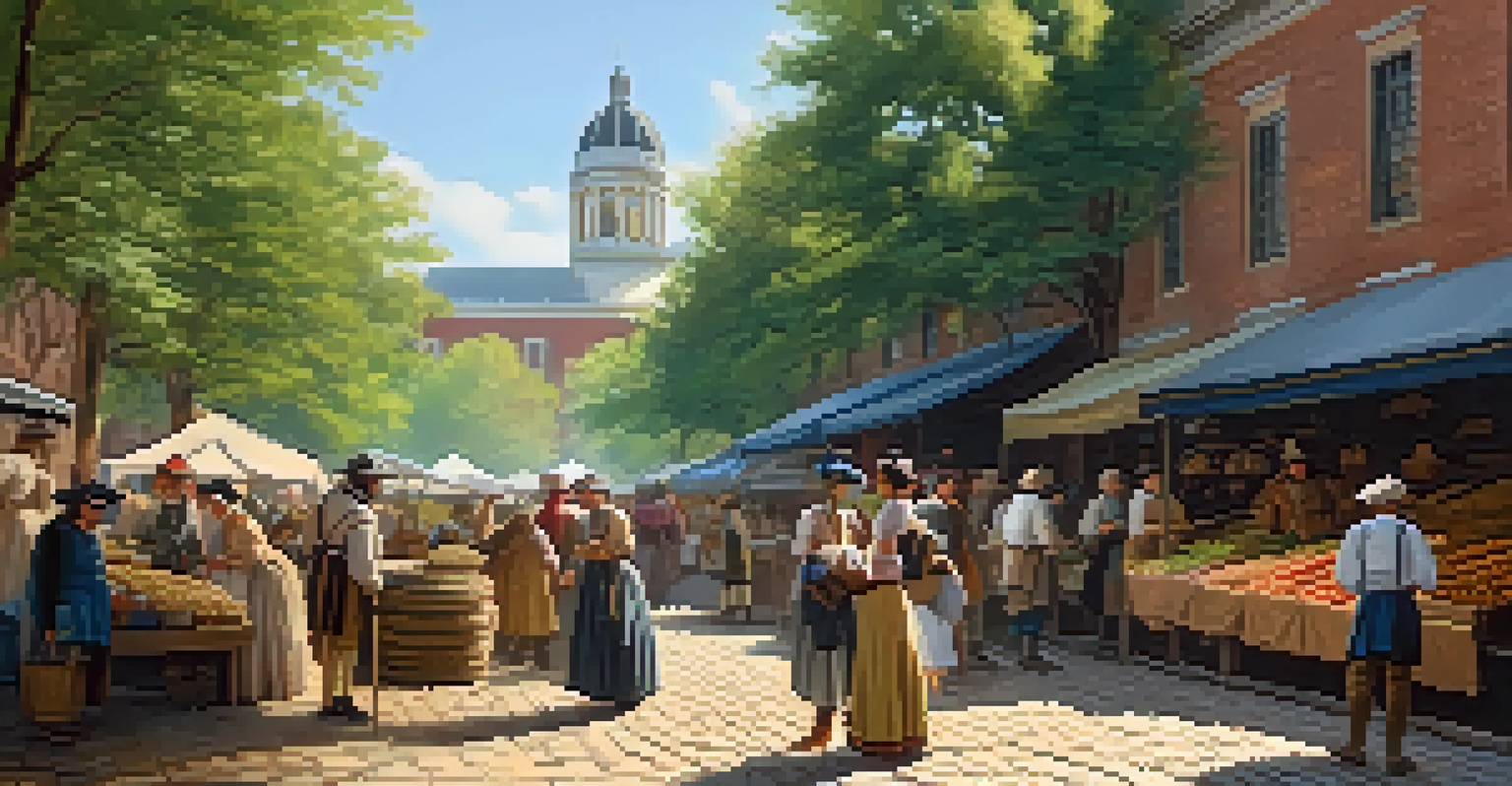The Founding of St. Louis: A Historical Overview

The Early Inhabitants of the St. Louis Area
Long before St. Louis became a bustling city, the area was home to various Native American tribes. These groups, including the Mississippians, thrived in the rich, fertile lands along the Mississippi River. They established complex societies, utilizing the resources around them for agriculture and trade.
The past cannot be changed. The future is yet in your power.
The region's strategic location made it a hub for trade and interaction among different tribes. Rivers were the highways of the time, connecting communities and facilitating the exchange of goods, ideas, and cultures. This cultural melting pot laid the groundwork for future settlements.
As European settlers began to arrive, they encountered these vibrant cultures. The interactions, though often fraught with tension, shaped the early dynamics of the area and set the stage for the founding of a city that would grow into a significant urban center.
French Exploration and the Founding of St. Louis
In the late 17th century, French explorers, drawn by the promise of new territories, began to explore the Mississippi River. Their goal was not only to expand their empire but also to establish trade routes with Indigenous peoples. This exploration was a pivotal moment that would lead to the founding of St. Louis.

In 1764, Pierre Laclède and his 13-year-old son, Auguste, arrived at the confluence of the Mississippi and Missouri Rivers. They recognized the potential of this strategic location and decided to establish a fur trading post, which they named St. Louis in honor of King Louis IX of France. This marked the official founding of the city.
St. Louis: A Cultural Crossroads
The city's diverse population and rich tapestry of traditions have shaped its unique identity as a cultural hub.
Laclède's vision transformed the area from a remote wilderness into a thriving settlement. The choice of location not only facilitated trade but also attracted settlers, further establishing St. Louis as a vital point for commerce and communication in the region.
Growth of St. Louis in the Late 18th Century
The late 18th century saw St. Louis flourish into a bustling center for trade and commerce. The city's strategic riverfront location allowed for easy access to transportation routes, fostering economic growth. As trade flourished, so did the population, drawing settlers from various backgrounds.
History is not a burden on the memory but an illumination of the soul.
By the turn of the century, St. Louis had become known as the 'Gateway to the West.' This nickname reflected its role as a launch point for many pioneers heading into the uncharted territories of the American West. The city was not just a commercial hub but also a cultural crossroads.
The diverse population contributed to a rich tapestry of customs and traditions, making St. Louis a unique blend of cultures. This vibrant community spirit laid the foundation for the city's identity and would continue to influence its development for years to come.
St. Louis and the Louisiana Purchase
In 1803, the Louisiana Purchase dramatically changed the landscape of St. Louis and the entire nation. The United States acquired a vast expanse of land from France, doubling the size of the country. This massive transaction opened up new opportunities for St. Louis as it became a key point for westward expansion.
With the influx of settlers and traders, St. Louis experienced unprecedented growth. The city emerged as a crucial supply point for those traveling westward. The bustling activity along the river drew people from all walks of life, further diversifying its population.
Economic Growth Through Transportation
Advancements in transportation, including railroads, propelled St. Louis into a significant trade center and economic powerhouse.
As a result of the Louisiana Purchase, St. Louis evolved from a small trading post into a significant urban center. This transformation not only impacted the city but also played a vital role in shaping the future of the United States as a whole.
Transportation Advances and Economic Expansion
The 19th century brought significant advancements in transportation that would further propel St. Louis into economic prominence. The establishment of railroads connected the city to other major urban centers, making it a vital transportation hub. This connectivity spurred commerce and attracted new industries.
As transportation improved, so did St. Louis's status as a major trade center. The city became known for its manufacturing and distribution capabilities, bolstered by its river and rail access. This created job opportunities and attracted a workforce eager for new prospects.
The economic boom also led to the development of cultural institutions, parks, and neighborhoods that defined St. Louis. This period of growth fostered a sense of community pride and laid the groundwork for the city's future as a cultural and economic powerhouse.
Cultural Flourishing in St. Louis
As St. Louis continued to grow, it became a melting pot of cultures, contributing to its unique identity. The city embraced various traditions, festivals, and cuisines, reflecting the diverse backgrounds of its residents. This cultural richness fostered a vibrant community spirit that is still evident today.
The 1904 World's Fair showcased this cultural diversity on a global stage, attracting millions of visitors. The event celebrated not only the city's achievements but also its commitment to innovation and progress. This fair left an enduring legacy, including the famous Forest Park, which remains a cherished public space.
Resilience and Transformation Today
St. Louis continues to evolve, blending its historical roots with modern developments while honoring its legacy of community and diversity.
Cultural institutions, such as museums, theaters, and music venues, flourished during this time, enriching the city's artistic landscape. St. Louis became known for its contributions to music, particularly jazz and blues, solidifying its reputation as a cultural hub in America.
St. Louis Today: A Legacy of Resilience
Today, St. Louis stands as a testament to resilience and transformation. The city has faced challenges, including economic shifts and social changes, yet it continues to evolve. The spirit of innovation that characterized its founding days remains a driving force behind its growth.
Modern St. Louis is a blend of its rich historical roots and contemporary developments. Neighborhoods that once thrived during the city's early years are being revitalized, showcasing a commitment to preserving history while embracing new opportunities.

As St. Louis looks to the future, it remains a vibrant city that honors its past. The legacy of its founding continues to inspire new generations, ensuring that the story of St. Louis is one of endurance, diversity, and community.